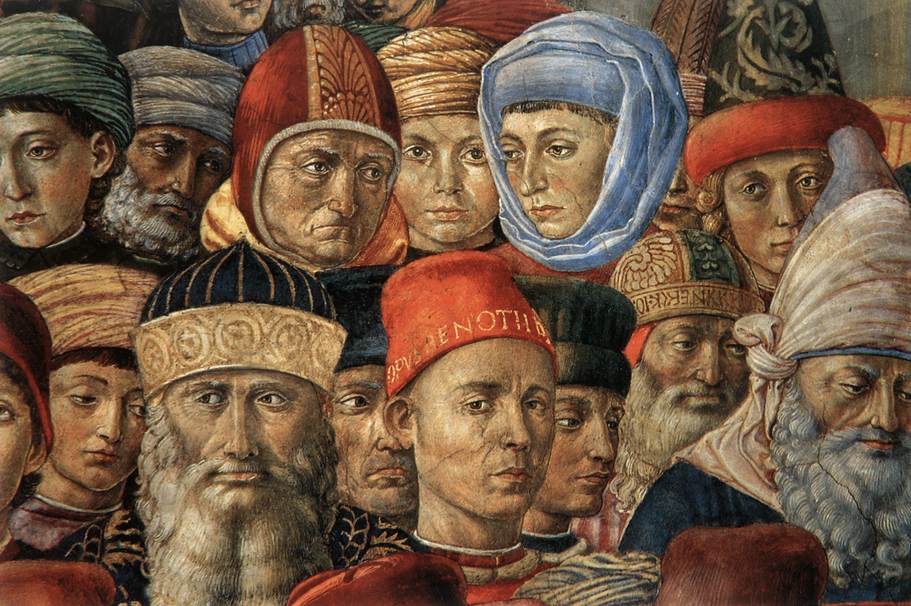Benozzo Gozzoli is one of the greatest Italian artists and painters of the 15th century, thanks to the many pictorial works of the highest quality he produced. A Florentine by birth and a pupil of Giorgio Vasari, Gozzoli moved mainly between Tuscany and Umbria, where he produced some of the most representative works of the period.
After delving into the main stages of his life, we point you to the places in Umbria where you can still admire the master’s works today.
Benozzo Gozzoli, life and training of an artist
Born near Florence around 1420 into a family of textile artisans, the artist was originally known by his real name: Benozzo Di Lese di Sandro. “Gozzoli” was a nickname later given to him, probably by Giorgio Vasari himself at whom he most likely spent his early formative years. Some also considered him a pupil of Beato Angelico from his youth, although art historians disagree on this point.
What is certain is that Benozzo Gozzoli turns out to have been an attentive and scrupulous disciple, a tireless worker and dedicated to the most minute details. It is also certain that he came into contact in later life with Beato Angelico, a leading figure of the Florentine Renaissance, whose pupil and collaborator he was in Florence. Beato Angelico also followed Benozzo Gozzoli in his travels between Rome and Orvieto in 1477-1478, where the two were particularly involved in decorating the Niccolina Chapel at the Vatican Palaces for Pope Nicholas V, and the Chapel of San Brizio inside Orvieto Cathedral.
In 1450, Benozzo Gozzoli moved permanently to Umbria and worked mainly in Montefalco. Here, among other works, he decorated the Pieve di San Fortunato and created the magnificent Madonna Della Cintola high altar now preserved in the Vatican.
Later he returned to Florence and worked in Tuscany, mainly between San Gimignano and Pisa. He finally died in Pistoia in 1497.
Benozzo Gozzoli, Montefalco and Umbria: the works
The Places in Umbria where you can admire the pictorial works of Benozzo Gozzoli are many, we point out the main ones where you can still find the most significant works of the master.
Montefalco, Gozzoli between the Pieve di San Fortunato and the Church of San Francesco
Called to Montefalco, Benozzo Gozzoli worked on the creation of significant paintings inside the Pieve di San Fortunato: the Madonna and Child between Saints Francis and Bernardino Da Siena, the Madonna and Child with a Musician Angel, and Saint Fortunato Enthroned. In addition, here he made the magnificent high altar Madonna of the Girdle. An extraordinary work in terms of quality of execution and structural engineering, the Madonna of the Girdle remained on long display in 2016 at the Museo Civico di Montefalco. At the end of the exhibition, the altar returned to the Vatican Museums where it is historically located and where it continues to be displayed and admired.
In addition to the parish church, Benozzo Gozzoli devoted himself to frescoing the Church of San Francesco in Montefalco. Today, the Civic Museum of Montefalco is located just inside the church and the adjacent convent, where it is possible to admire the paintings and various frescoes that it preserves, made mainly between the 14th and 16th centuries. Among them, not to be missed are Gozzoli’s The Stories of the Life of St. Francis, a pictorial cycle created in 1452 and still very well preserved.
For those who are passionate about art or interested in learning more, we would like to point out that Sistema Museo and the Civic Museum organize various pedestrian itineraries with themed guided tours, including the themed tour Montefalco and the Wonder of the Renaissance, dedicated precisely entirely to the figure of Benozzo Gozzoli, from Wednesday to Sunday at the following times: 12:00, 15:30, 17:00.
Gozzoli in Orvieto
A number of important works by Benozzo Gozzoli, dating from the period of his collaboration with Beato Angelico, are preserved inside Orvieto’s famous cathedral and particularly in the precious Chapel of San Brizio.
The Chapel marks an important phase of change, mainly due to the slow and symbolic enfranchisement of power from Florence to the papacy of Rome. Some of the best Italian artists of the 15th century collaborated on its creation: first Beato Angelico, followed by Benozzo Gozzoli precisely with whom he collaborated at that time, and then Luca Signorelli. Angelico and Gozzoli produced in particular: Christ the Judge and Angels; Racemi Decorations; The Choir of Prophets.
Perugia, Gozzoli at the National Gallery of Umbria
The National Gallery of Umbria is located in Perugia and is Umbria’s largest collection of works created between the 13th and 19th centuries. All the greatest Umbrian artists and some of the most valuable works by central Italian artists are featured here.
In the Gallery’s beautiful rooms, alongside works by Pinturicchio, Piero della Francesca and Perugino, we find Beato Angelico’s masterpiece Polyptych of San Domenico and especially the Altarpiece of New Wisdom (1456) by our own Benozzo Gozzoli.
For more information on visits, opening hours and prices, also read the article on the National Gallery of Umbria.


Comment (0)